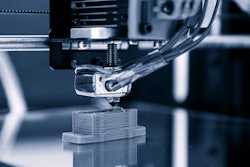
The efficiency-enhancing benefits of 3D printing/additive manufacturing (AM) can deliver many quantifiable advantages for supply chain managers. Previously, I talked about its ability to simplify the supply chain via the production of complex parts. Another key aspect of AM that can deliver even more significant efficiencies within supply chains, is its ability to enable the use of virtual/digital inventories. This is quite literally the ability to access and pull parts from a digital (rather than physical) inventory and effortlessly 3D print them anywhere at any time in the exact quantity desired. The digital inventory can be stored on a local disk, in a central disk or even in the cloud.
This has several positive implications, such as cost savings that arises from eradicating the need for large physical inventories. Let’s face it, physical inventory is the weak spot in any supply chain; it has no benefits beyond the availability of parts and is a burden for companies to pay large sums of money in order to maintain it. From a logistics perspective, using AM with virtual inventories cuts out the headache and costs of balancing excess and shortages in physical inventory at individual locations. Indeed, the logistical benefits are even greater as virtual inventories simplify and streamline the distribution network at the geographic level. Think about it – there’s no longer any physical inventory, which means the traditional central-to-region-to-local distribution model is eradicated, as is the need to do projections, which have to be exact, lest the company suffers from more delays and more costs. In contrast, working digitally takes no time at all and is much cheaper.
As the cost of physical inventory is eliminated, companies can always keep low volume parts in inventory, making missing parts a thing of the past. This also means that, should a problem with a part arise, supply chain managers can react quickly - without having to dispose of older inferior parts (because they don’t exist in the first place!)
Better yet is the opportunity via AM to recreate obsolete or out-of-production parts, thereby over-coming an inherent problem for both manufactures and their customers. Additionally, it can lead to higher satisfaction (from the latter) and additional revenues (for the former) that were not previously economical. These benefits also apply for each party when you consider the advantage delivered by AM insofar as the production and delivery of emergency spare parts.
Another aspect to consider is how the use of a virtual inventory pushes the manufacturing step further down the chain. That said, this invariably means that it’s the supply chain that needs to ensure quality is maintained, both in terms of consistency between parts, and in terms of traditional post-manufacturing quality assurance. This is especially important when taking advantage of the on-demand nature of AM, which I will cover in my next column. For now, as I’ve hopefully conveyed, the use of virtual inventories with AM offers plenty of opportunity when it comes to optimizing efficiencies within supply chain management.
















